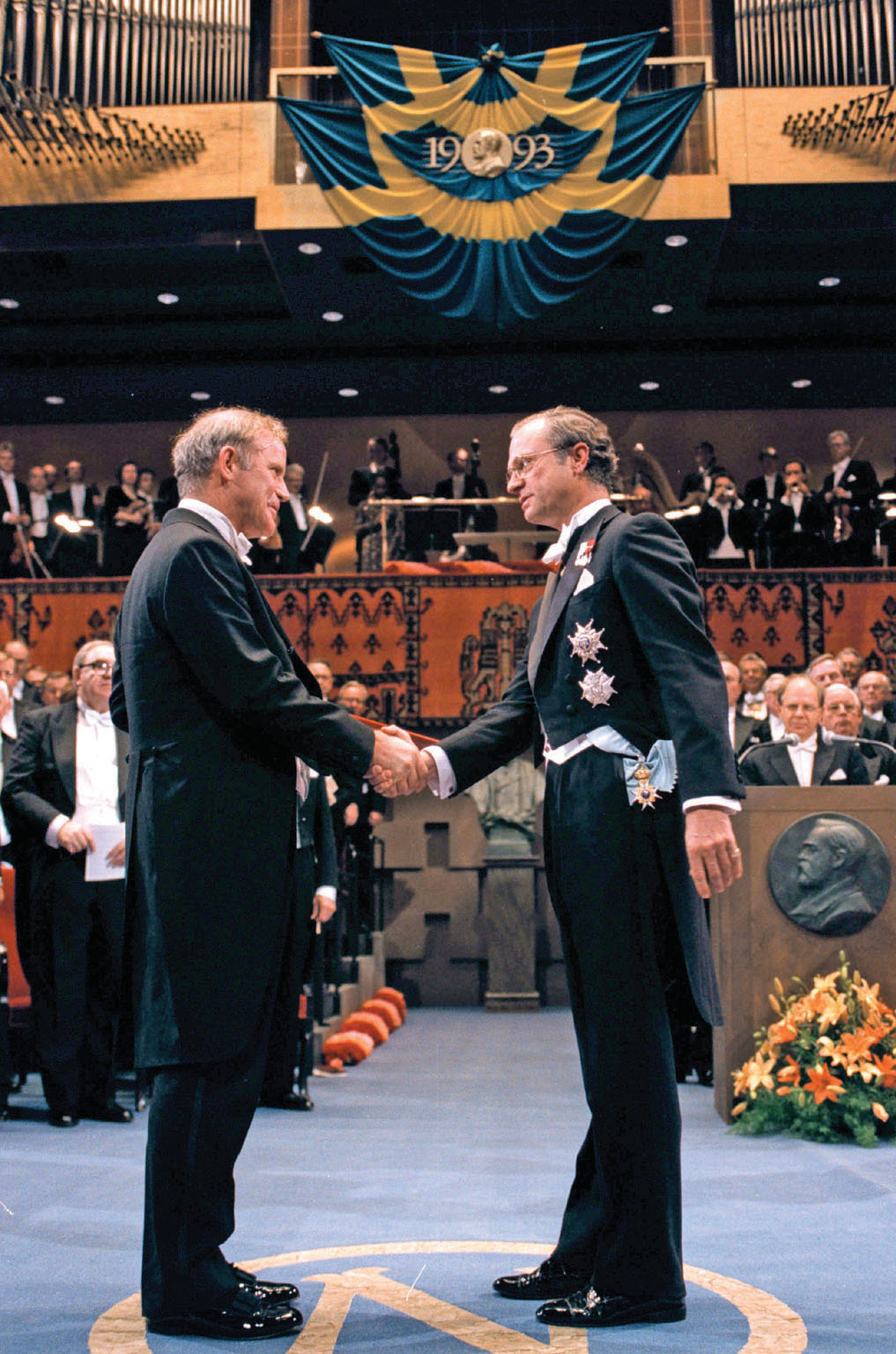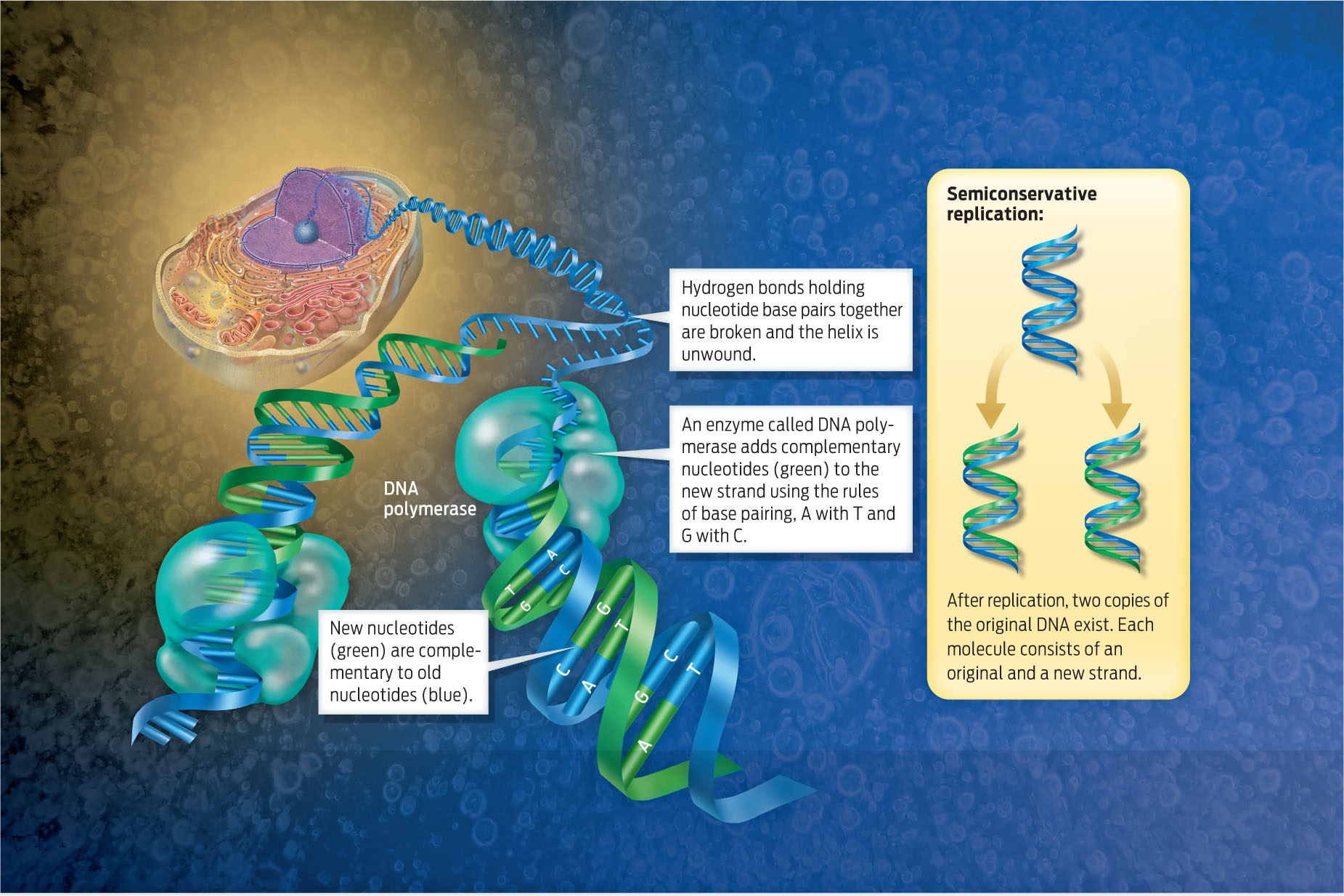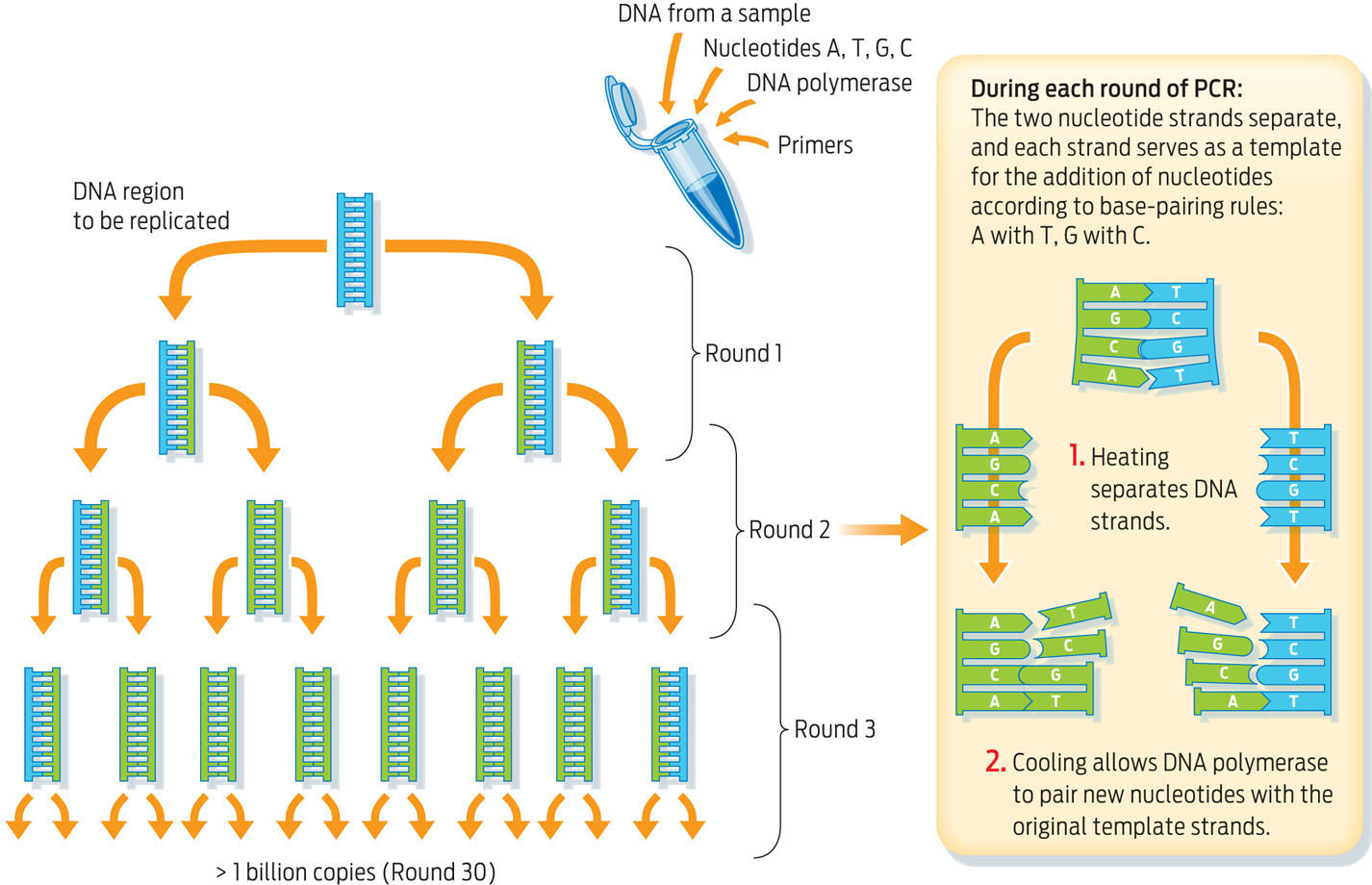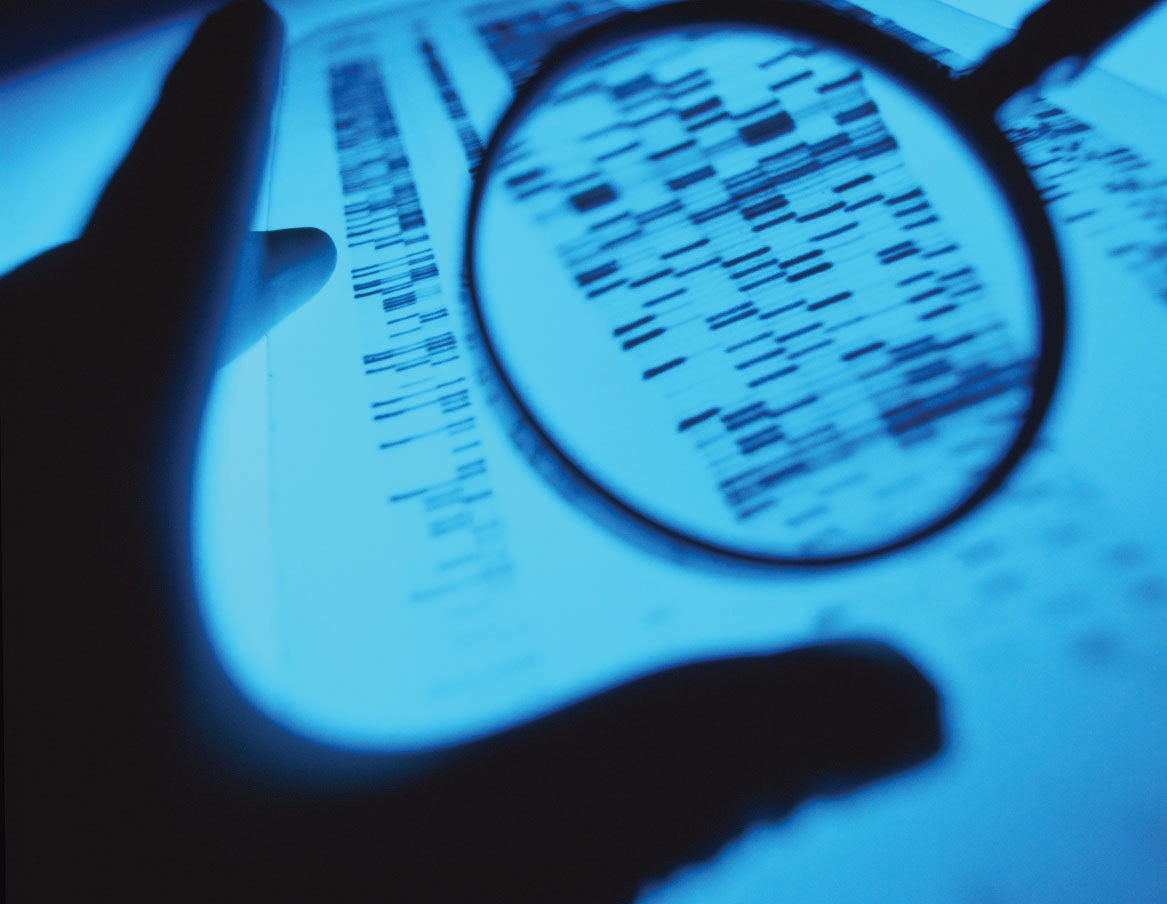MAKING MORE DNA
In principle, creating a DNA profile is simple enough, but there is a huge practical hurdle: having enough crime scene DNA to analyze. Although all body fluids and materials contain cells that house our DNA, the amount left at crime scenes is often very small. Without some way to increase the amount of DNA in a saliva stain, for example, DNA would be useless as evidence.
DNA REPLICATION The natural process by which cells make an identical copy of a DNA molecule.

Forensic scientists solve this problem by using a method to increase, or amplify, the amount of DNA in a sample. The method takes advantage of the way cells normally make more DNA in the process of DNA replication. DNA replication occurs throughout our lives whenever cells reproduce. Because each cell comes from the division of a pre-existing cell (see chapter 3), the DNA of the parent cell must be replicated so that there is one copy for each daughter cell. The process of DNA replication is essentially the same in all organisms.
143
COMPLEMENTARY Fitting together; two strands of DNA are said to be complementary in that A always pairs with T, and G always pairs with C.
To understand how DNA replication works, note that the two strands of nucleotides in a DNA helix do not pair up randomly, but in a consistent pattern: A pairs with T, and G pairs with C. These nucleotides pair preferentially because they are the right shape to form stable hydrogen bonds with each other. Because of this patterned pairing, the two strands are said to be complementary, meaning that they fit together like pieces of a puzzle (see Milestones in Biology: The Model Makers).
During DNA replication, each strand of DNA serves as a template for the creation of a new complementary strand. The new complementary strand will have bases complementary to the original strand, based on the above “rules” of base pairing. For example, if there is an A on the template strand, a T will be added to the complementary strand being formed.
DNA POLYMERASE An enzyme that “reads” the sequence of a DNA strand and helps to add complementary nucleotides to form a new strand during DNA replication.
The steps of replication happen in a precise order: First, the helix is unwound and the two strands “unzip” from each other. Then, an enzyme called DNA polymerase builds a new strand of DNA along each unzipped strand: free nucleotides floating inside the cell’s nucleus are added to each new strand in a sequence that is complementary to the nucleotide sequence on the original template strand, A pairing with T and C with G. The end result is two complete double-stranded molecules of DNA. Because each replicated DNA molecule is made up of one original and one new strand, DNA replication is said to be semiconservative (INFOGRAPHIC 7.3).
SEMI-CONSERVATIVE DNA replication is said to be semiconservative because each newly made DNA molecule has one original and one new strand of DNA.
When cells reproduce, they must first replicate their DNA so that each new cell contains a copy of the DNA molecule. Complementary base pairing between DNA strands guides replication of two new strands.

DNA replication is a remarkably accurate process that happens at mind-boggling speeds, the polymerase enzyme adding about 1,000 nucleotides per second and rarely making a mistake. On a human scale, that’s like a car speeding down the highway at 300 miles per hour, weaving in and out of traffic without hitting any other cars.
POLYMERASE CHAIN REACTION (PCR) A laboratory technique used to replicate, and thus amplify, a specific DNA segment.
Forensic scientists make use of this remarkable cellular process when they need to amplify the DNA in a crime scene sample. The method they use, called the polymerase chain reaction (PCR), is similar to DNA replication that occurs naturally—but it takes place in a test tube.
PCR was the brainchild of Kary Mullis, a 39-year-old chemist and amateur surfer who was working for a biotech company in the san Francisco Bay Area in 1983 when he developed the method. Mullis has said that the idea for PcR came to him as “a single lightning bolt” while driving to his cabin in Mendocino late one Friday night, his girlfriend asleep in the passenger seat next to him. The technology has so transformed the field of biology—not to mention forensics—that Mullis was awarded a Nobel prize in 1993.
144
From a starting sample of just a few molecules of DNA, PCR can make billions of copies.
Here’s how it works: To a small sample of DNA, scientists add nucleotides, the DNA polymerase enzyme, and primers—short segments of DNA that act as guideposts and flag the section to which DNA polymerase should bind to begin replication. The DNA is first heated to separate the strands, and then cooled to allow new nucleotides to be added. From a starting sample of just a few DNA molecules, PcR can make billions of copies of a specific region of the DNA in less than a few hours (INFOGRAPHIC 7.4).
The polymerase chain reaction (PCR) is similar to naturally occurring DNA replication, except that it occurs in a test tube and only replicates specific regions of a DNA molecule. From a starting sample of just a few molecules of DNA, PCR can make billions of copies.

145
